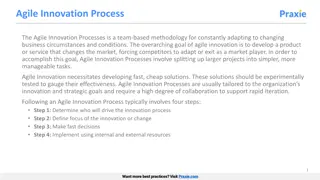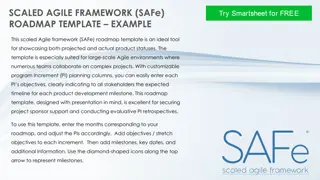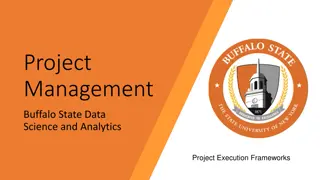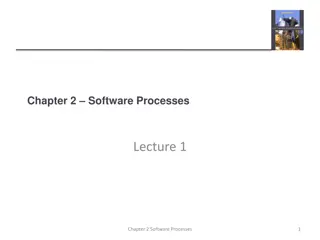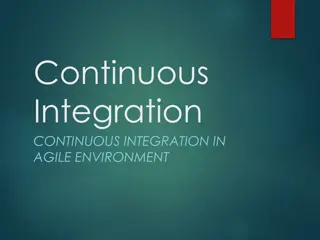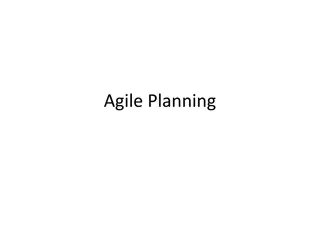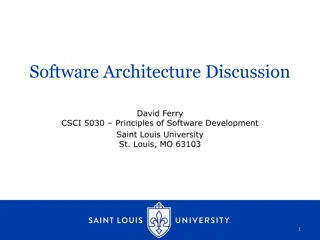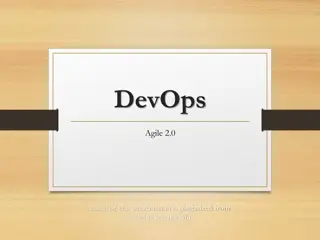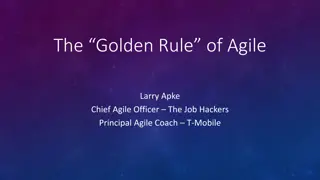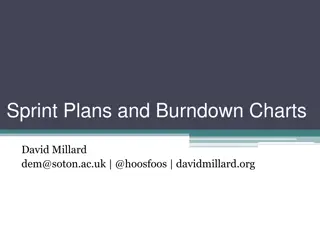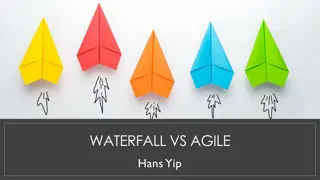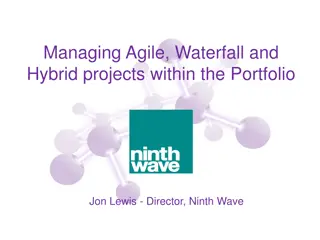Agile Security Practices and Collaboration Insights
This presentation delves into the intersection of Agile methodologies and security practices, highlighting the importance of predicting and preventing bottlenecks. With a focus on agile-security collaboration, the talk emphasizes the need to balance risks, enhance visibility, and foster collaboration. Key concepts such as Scrum, Microsoft's SDL in Agile, and daily vs. security practitioner dynamics are explored to provide valuable insights for optimizing security in Agile environments.
Download Presentation

Please find below an Image/Link to download the presentation.
The content on the website is provided AS IS for your information and personal use only. It may not be sold, licensed, or shared on other websites without obtaining consent from the author.If you encounter any issues during the download, it is possible that the publisher has removed the file from their server.
You are allowed to download the files provided on this website for personal or commercial use, subject to the condition that they are used lawfully. All files are the property of their respective owners.
The content on the website is provided AS IS for your information and personal use only. It may not be sold, licensed, or shared on other websites without obtaining consent from the author.
E N D
Presentation Transcript
Theories of Agile, Fails of Security Daniel Liber CyberArk
Short Bio R&D Security Leader @ CyberArk Promoting product security SDLC ~10 years of experience Research, consulting, PT, engineer CyberArk: Privileged accounts security http://www.cyberark.com
Success is stumbling from failure to failure with no loss of enthusiasm. (Winston Churchill) Why Fail?
What can you take out of this talk? Predicting and preventing Agile-Security bottlenecks Balancing out security risks Security practices visibility Collaboration, delegation, validation
Most popular Agile slide in the world! Individuals and interactions over processes and tools Working software over comprehensive documentation Customer collaboration over contract negotiation Responding to change over following a plan
Agenda We need to start from somewhere
Microsofts SDL (Agile) Sprint Bucket Essential One time Important Foundational Performed every sprint on a regular basis but can be spread across multiple sprints once at the start of every new Agile project
Scrum Explained Sprint: regular, repeatable, deliverable cycle Backlog: Prioritized stack of features Roles: Product Owner, Team, Scrum Master Stories: Requirement as user point of view Grooming: Refining the backlog Meetings: Planning, Daily, Summary, Retro Deliverables Spring Backlog Product Backlog Sprint
Daily vs. Security Practitioner Problem Sprint of 2 weeks Overlooking 4 teams Participating in every daily 15 minutes each daily 10 days X 4 teams X 15 minutes = 10 hours ~ 1 day = 10% of your sprint time
Daily vs. Security Practitioner Problem Solution use security champions Team members Security friendly Eyes and ears on meetings Potential for security team (In a way, the team s security bouncer)
Demanding Security Task, Short Cycle Problem Solution talk to Product Owner Product roadmap sharing Sensitive epics / features to review Allocate security sprints (buckets) Cut off: Decide on top threats to explore (Cooperation with business is essential)
Visibility of Security in Agile The most efficient and effective method of conveying information to and within a development team is face-to-face conversation. face-to-face meetings can t reflect status of security task to a 3rd party Interactions require two or more to participate
Kanban Explained Incremental: Improvement by continuous change WIP: Working In Progress Cycle Time: Time from start to done of a task Visibility: Flow of work is visualized Board: Activity is managed using a Kanban board
Security Fixes and Improvements How you wish to feel How you feel
This Security Issue Will Have To Wait Problem Solution Define one of the next tracks: SLA (Hint: challenging, but still measurable) Security WIP Story points Per product vs. per all products Per sprint vs. per quarter Fixes vs. Improvements
Integrating Security into Boards Boards with no visible security activities:
Integrating Security into Boards Adding security lanes: Design Design review column Dev Static analysis / CR column QA Penetration testing Invisibility = Problems
Measuring Security in Agile What is different from Waterfall? Building the big picture from small iterations Collecting evidence of simultaneous activities Vague control points Should be every Sprint? Group of sprints? Version release?
Measuring Security in Agile Security cards on board velocity, cycle time, etc. From Grooming to Ready Each card gets a security level score Each score gets different attention for security When card is ready, look for evidence Automation, automation, automation
Questions? Not all Agile theories help security Adjustments implemented will prevent fails Eliminate security bottlenecks Empower others to execute more security activities
Pictures references http://www.japanprobe.com/wp-content/uploads/hurdle-face.jpg http://memegenerator.net http://imgflip.com https://www.microsoft.com/en-us/SDL/Discover/sdlagile.aspx http://mascotdesigngallery.com


